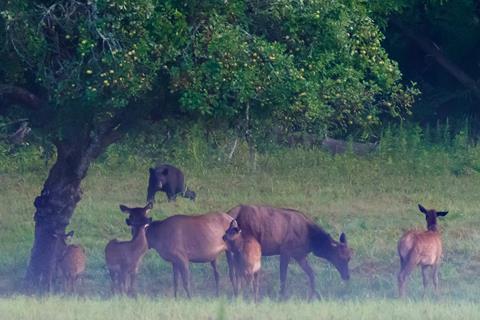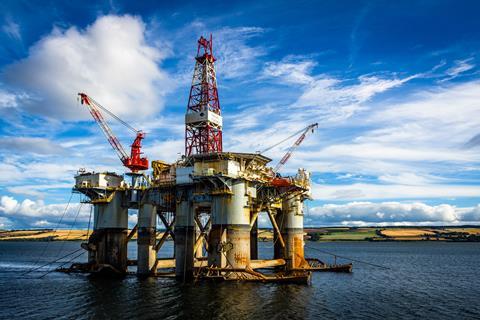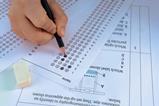Ensure your students have a firm understanding of the chemistry behind climate change

Many young people have rallied to join marches and demonstrations nationwide demanding urgent action against climate change. At the time of writing, the UK has set an ambitious aim of 68% emissions cut by 2030, a world-leading target. Elsewhere, US President Biden has appointed a ‘domestic climate tsar’, Gina McCarthy, to prepare an aggressive carbon-cutting plan. It has never been more vital for students to learn about the role of carbon in our world and for our teaching to be engaging and inspiring.
What students need to know
Fundamental to developing climate change literacy is the understanding of the many different forms carbon can take in our world:
- carbon dioxide and methane in the atmosphere
- carbohydrates and other organic molecules in vegetation, animals and organisms
- dissolved carbon dioxide and carbonates in the oceans
- ‘carbon reservoirs’ (or ‘locked up’ carbon) such as crude oil, natural gas and sedimentary rock.
Students need to understand how carbon moves between these different forms. This helps them to understand the complex natural balances that exists and the ongoing impact of human activity.
Ideas for the classroom
Students will have prior knowledge of this topic, both from the media and their previous science lessons. They will likely have already encountered respiration and photosynthesis and therefore have a feel for how carbon can be cycled around the Earth.
Begin by probing this prior knowledge through some simple questioning. Ask students to name different forms of carbon that they have encountered. Define key terms such as photosynthesis and respiration. Then ask what role carbon dioxide plays in the atmosphere. This discussion enables you to scaffold or challenge students’ learning appropriately later on.

The intricacies of the carbon cycle can be difficult for students to comprehend. Modelling methods are an excellent way to promote thinking and help to improve their understanding. A recent study suggested that modelling helps to activate students’ visual memories, which makes their learning experience more meaningful and permanent. Put this into practice with the carbon cycle game (download it below) where students take on the role of a carbon atom as it cycles through the Earth, flipping coins to move around various stations that each represent a different form of carbon, cycling continuously until they become ‘locked up’. This active and enjoyable game always creates a buzz in my classroom.
From their travels around the stations, students can then create their own carbon cycle, detailing the stations they have visited and the processes which moved them on. This is constructivist learning at its best: students do most of the work while you circulate to guide and probe understanding. This activity could also be adapted as a card-sort activity. Supply your students with cards showing the different forms of carbon, the processes and some arrows, then ask them to construct the carbon cycle.
You will need to clearly identify the different forms which carbon can take. The game introduces these and you should encourage your students to make a note of these on their cycle. Link this to the starter discussion, suggested in the downloadable resources, and remind students that reactions and processes are taking place at each stage.
Download this
The carbon cycle game and instructions
Students take on the role of a carbon atom as it cycles through the Earth to simulate the carbon cycle. Download the materials as MS Word or pdf.
Lesson plan and accompanying resources
An example lesson on the carbon cycle including starter slide, carbon cycle game, follow-up activity and consolidation questions. Download the plan (as MS Word or pdf), accompanying slides (as MS PowerPoint or pdf) and scaffolded cut-and-stick activity (as MS Word or pdf).
Carbon cycle game and complementary lesson plan from the Education in Chemistry website: LINK
An alternative, live-action game is available with instructions and teacher notes through the Science Museum, and works well with younger students. STEM Learning offers a fantastic simplified board game of some key processes and some Top Trumps-style cards for students to learn more about the complexity, importance and abundance of different ‘molecules of life’.
An alternative, live-action game is available with instructions and teacher notes through the Science Museum, and works well with younger students (LINK). STEM Learning offers a fantastic simplified board game of some key processes and some Top Trumps-style cards for students to learn more about the complexity, importance and abundance of different ‘molecules of life’ (LINK).
Take your students’ understanding further by discussing the relative proportions of the different forms of carbon. Students are often surprised that carbon dioxide forms only a tiny percentage (0.04%) of our atmosphere yet is causing so many current issues. Ask them about the number of processes that lock up and release carbon, and get them to predict the timescales involved.
Common misconceptions
The carbon cycle game directly combats the misconception that the carbon cycle consists of only photosynthesis and respiration, building on the large crossover with biology. It also revises students’ prior knowledge of the key processes involved and constructs them into a carbon cycle, helping the ideas to flow together.

A major misconception is the timescale of the processes. While some processes can happen over the span of a lifetime (the ‘fast’ carbon cycle), many processes take thousands of years (the ‘slow’ carbon cycle). NASA’s Earth Observatory website goes into plenty more detail. Encourage students to highlight slow and fast processes to clarify this distinction. This helps to define fossil fuels as finite resources despite the seemingly ‘easy’ route carbon takes to become locked up in the game.
A major misconception is the timescale of the processes. While some processes can happen over the span of a lifetime (the ‘fast’ carbon cycle), many processes take thousands of years (the ‘slow’ carbon cycle). NASA’s Earth Observatory website goes into plenty more detail (LINK). Encourage students to highlight slow and fast processes to clarify this distinction. This helps to define fossil fuels as finite resources despite the seemingly ‘easy’ route carbon takes to become locked up in the game.
Formative assessment
A wide-ranging discussion helps students to consolidate their understanding and helps you to judge how well they have understood the underlying concepts. After playing the carbon cycle game, ask them to compare which stations they spent most time at. How many different routes did they take? Which processes are ‘natural’ and which are caused by human activity? Who got locked up, and how?
Progression to 14–16
This learning will support students with their study of:
- The role of greenhouse gases and the role of humans in their generation – students can build upon the cycle to show which processes occur naturally, and which are caused by human activity.
- Reducing our carbon footprint – students can visualise which processes could be reduced to limit carbon dioxide emissions by identifying them on their carbon cycle. From this, they will be able to suggest what action should be taken.
- Crude oil – students can see why crude oil is a finite resource, since it takes many thousands of years to form, and can describe the ‘route’ of formation on their carbon cycle.
Above all, students will develop a deeper understanding of the intricate balance of carbon in our world, enabling them to have wider discussions surrounding carbon dioxide emissions in the real world. This learning equips them with knowledge of natural and human-led processes, and why upsetting the balance can go on to have huge implications on the global climate.
Take-home points
- Modelling the carbon cycle is a fun and engaging way to promote learning. Students construct their own version, leading to a deeper understanding and greater retention.
- Watch out for the timescale of each process, and make sure students can identify fast and slow processes within the cycle.
- Build on students’ prior knowledge by engaging them in discussions throughout their learning.
- Highlight key processes, different forms of carbon and which are natural and human-led processes. This prepares them for discussions about human activities which increase carbon dioxide in the atmosphere, the consequences of this, and how we can reduce our individual carbon footprints.














2 readers' comments